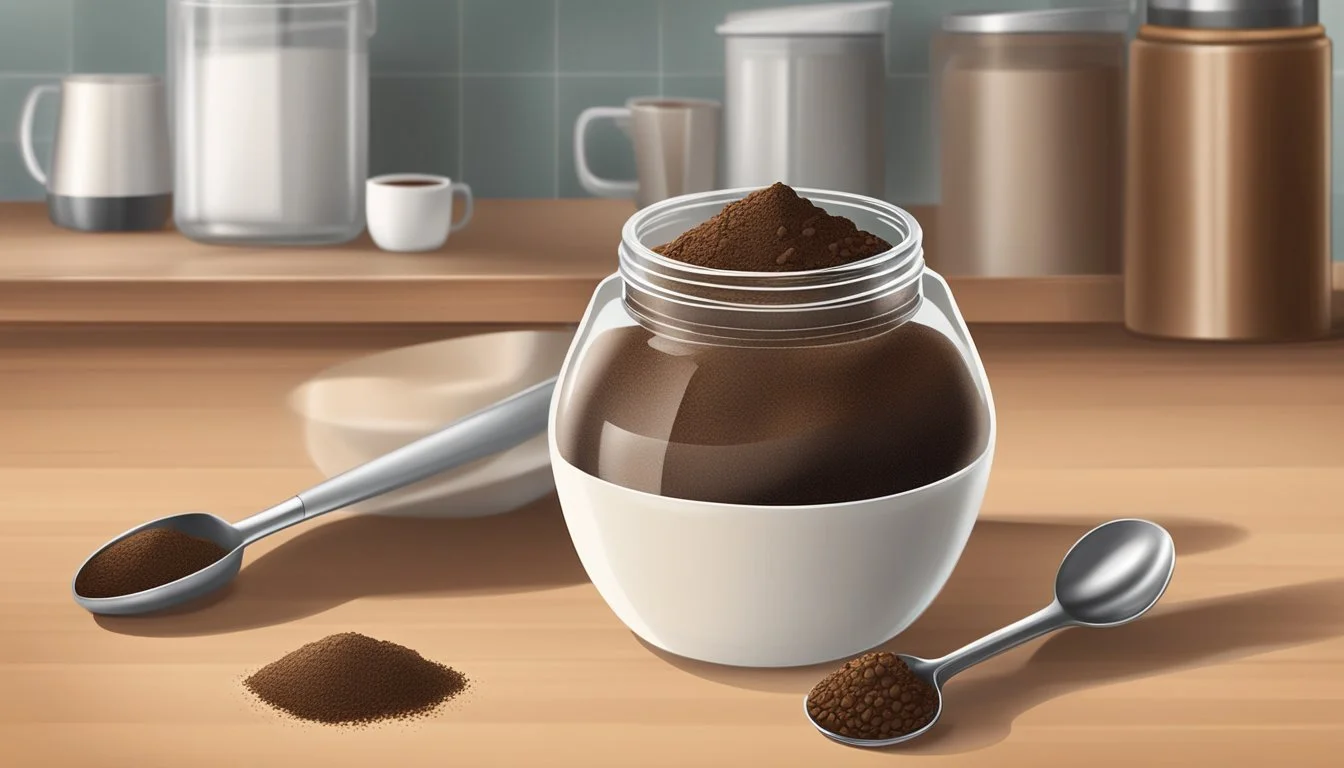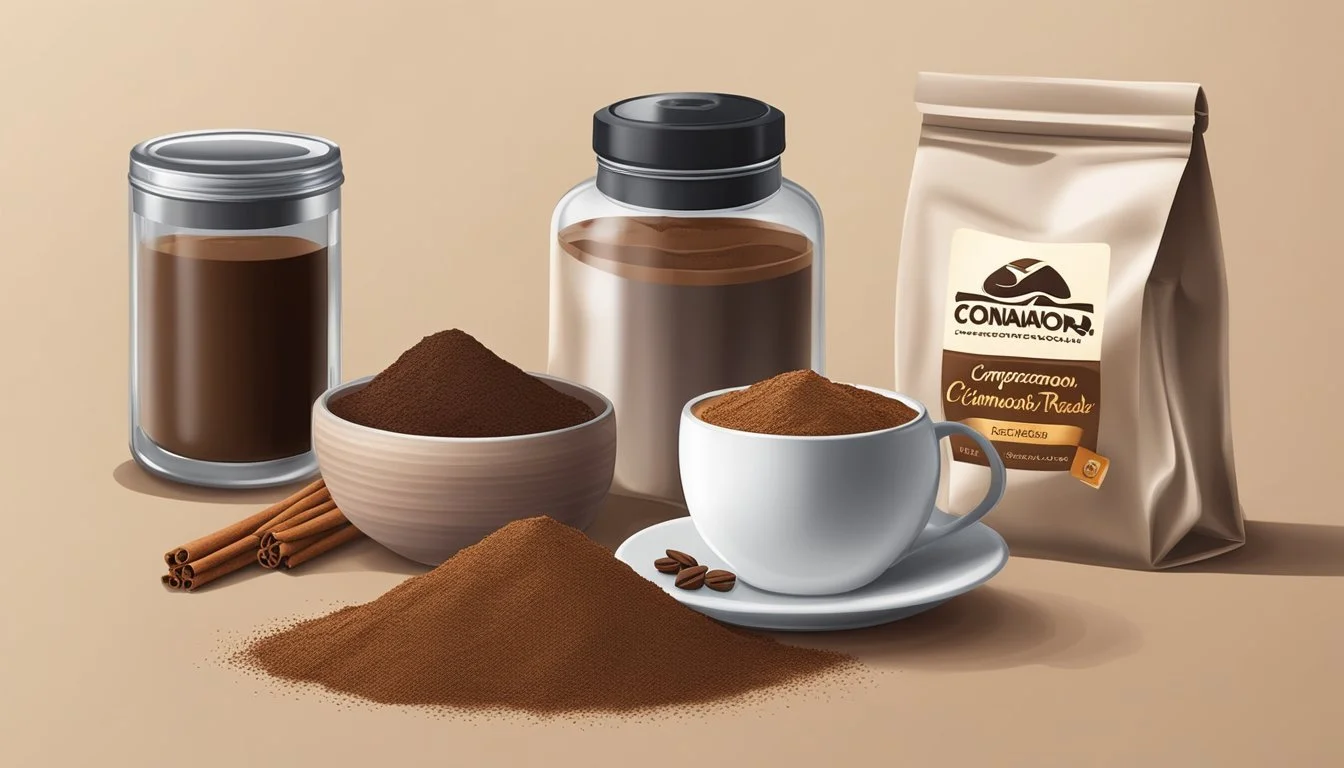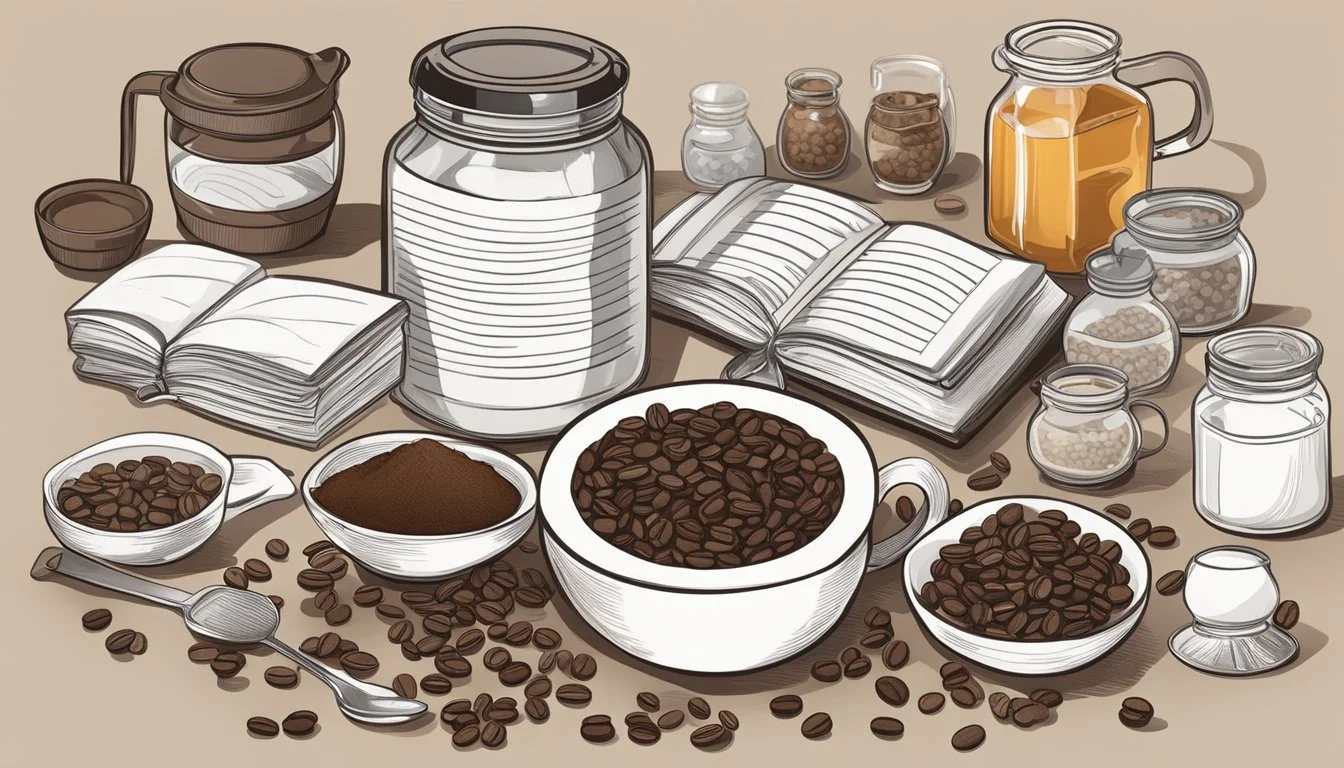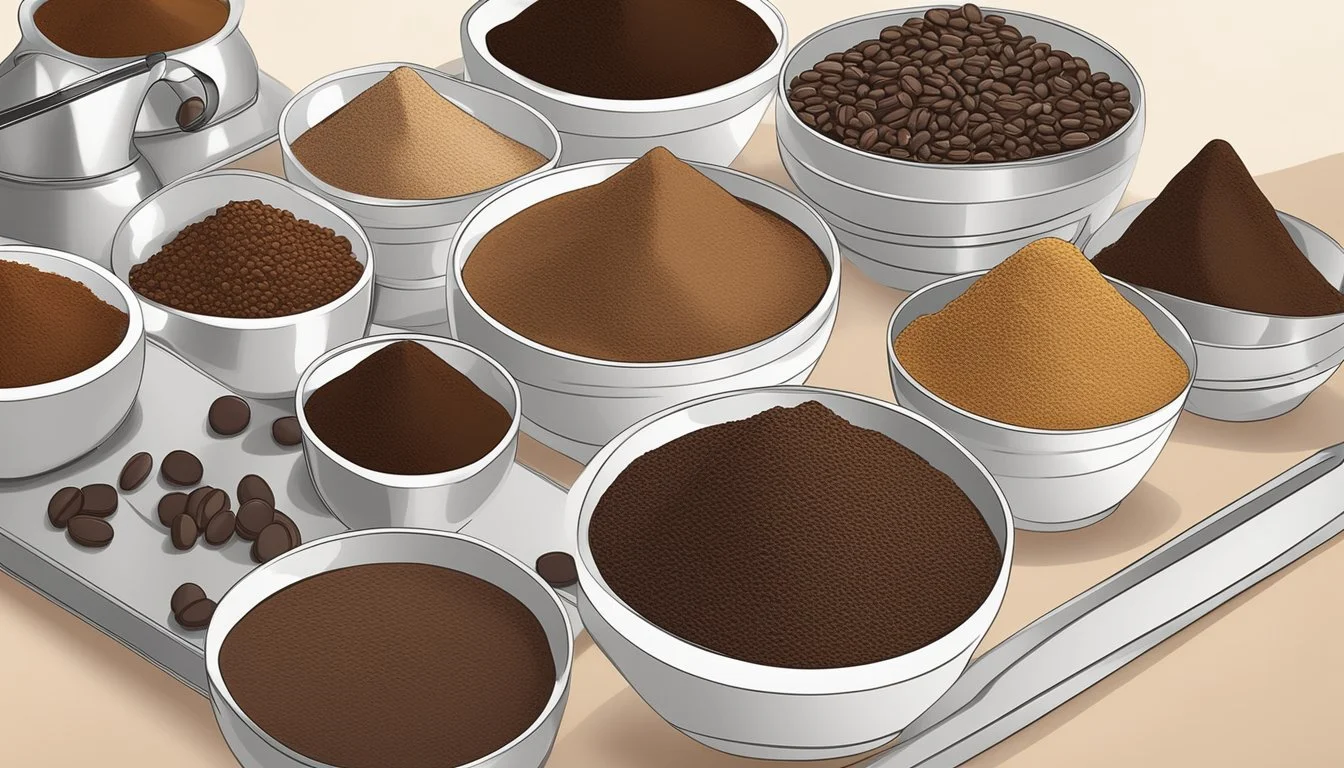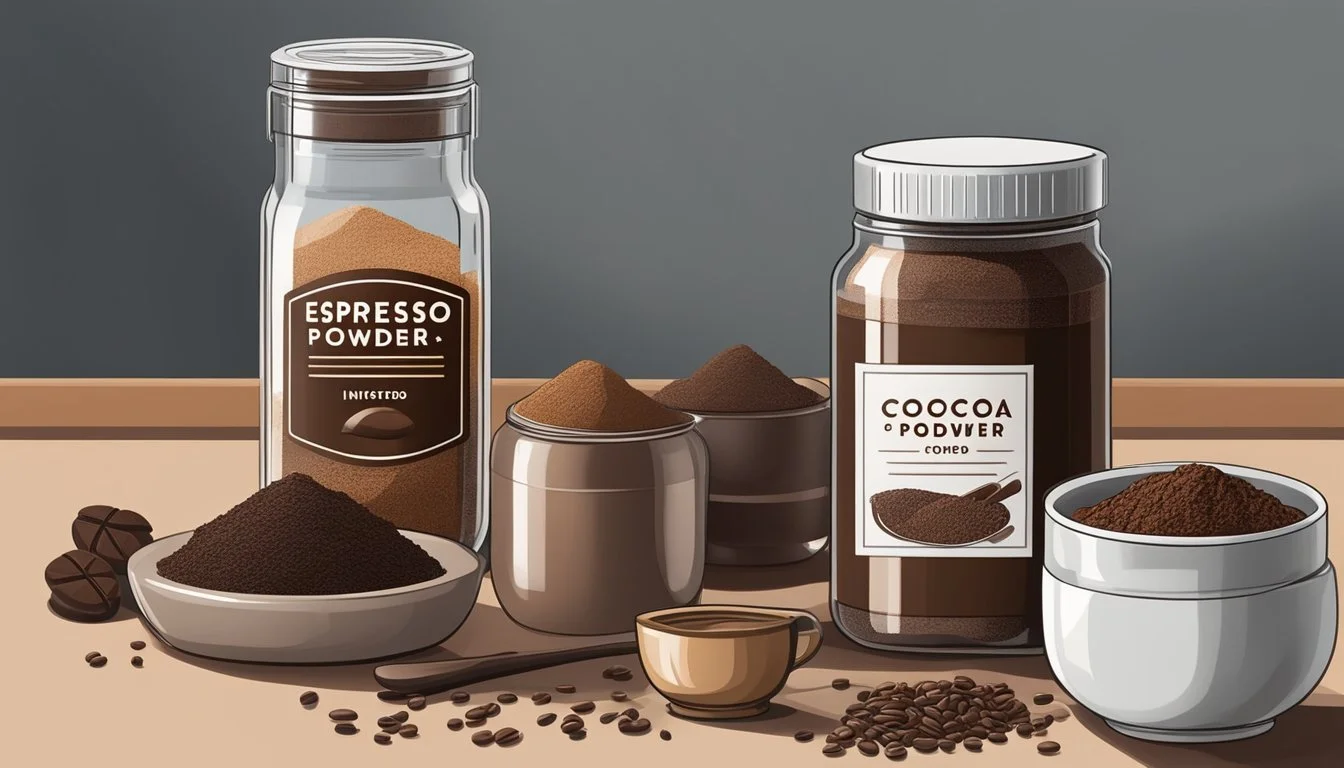Espresso Powder Substitutes
Top Alternatives for Baking and Cooking
Espresso powder is a staple ingredient in many recipes, recognized for its ability to enhance the richness and depth of chocolate desserts, and for adding a complex flavor profile to both sweet and savory dishes. It is essentially a concentrated form of instant coffee, but more potent, designed specifically for cooking and baking rather than drinking. Due to its finely ground texture and strong taste, it easily dissolves and integrates into a variety of recipes without altering the desired consistency.
However, despite its popularity among home bakers and professional chefs alike, there may be times when espresso powder is not readily available or when an alternative is sought to accommodate dietary preferences or to tweak the flavor in a recipe. Understanding which substitutes can successfully mimic the bold, robust flavor of espresso powder without compromising the overall taste of a dish is crucial for any culinary enthusiast.
Several viable substitutes exist, and options range from common household ingredients like instant coffee to more specialized items like Dutch-processed cocoa powder. Each alternative offers a unique set of characteristics and may require different considerations regarding quantity and additional taste balancing. The right substitute can ensure that the desired intensity and richness in desserts (What wine goes well with desserts?), rubs, and other recipes are achieved even in the absence of espresso powder.
Understanding Espresso Powder
Espresso powder is made from darkly roasted coffee beans that are ground, brewed, and then dehydrated into a fine powder. The origins of the beans vary, but they are typically of a variety specifically chosen for their ability to contribute a strong, distinctive flavor. While espresso beans are a particular roast and grind used for making espresso coffee, the powder is more about its concentrated form suitable for cooking and baking.
The powder is characterized by a significant bitterness and intensity that is meant to enhance the flavor profile of various recipes rather than being used as a standalone drink. It is known for its ability to make chocolate (What wine goes well with chocolate?) flavors more pronounced and to add a depth of flavor that is not achieved with coffee alone.
Properties Description Concentration Highly concentrated coffee essence Bitterness Potent bitter notes Flavor Rich and deep, with a robust coffee character Usage Used sparingly to infuse dishes with espresso flavor
In the culinary world, espresso powder is typically used in small amounts due to its concentrated nature. Even a teaspoon can imbue a dish with complex flavors. When integrating espresso powder into recipes, one should account for its ability not just to complement, but also to intensify the other ingredients it is paired with.
Though it shares similarities with instant coffee, espresso powder is unique in its formulation and the intensity of the flavor it imparts. It is not commonly used as a substitute for a cup of espresso but rather as an ingredient that adds depth to sweet and savory dishes alike.
Applications in Baking and Cooking
Espresso powder is a versatile ingredient that enhances the flavor profile of both sweet and savory dishes through its concentrated intensity.
Role in Baked Goods
In baked goods, espresso powder plays a significant role. It is often added to recipes such as cakes and brownies to intensify the chocolatey taste, making the flavor more profound and rich. A small amount can have a substantial impact. Here’s how it is typically incorporated:
Cakes: A teaspoon of espresso powder can deepen the chocolate flavor, allowing bakers to achieve a more luxurious taste.
Brownies: The addition of espresso powder complements the bitterness of chocolate, enhancing the overall flavor without overwhelming the palate.
Espresso powder can be substituted with ingredients that contribute a similar depth, such as instant coffee or Dutch-processed cocoa powder, though adjustments may be needed to match the desired flavor intensity.
Enhancing Savory Recipes
Beyond sweets, espresso powder can be a secret ingredient in savory dishes. It can be used in spice rubs to provide a complex, earthy element that enriches the dish's overall flavor. For example:
Spice Rubs: A blend may include a pinch of espresso powder to add a subtle yet distinctive taste to meats, providing a touch of bitterness that complements savory spices.
When using substitutes in savory recipes, it's essential to consider the flavor balance. Substitutes should not overpower the dish but rather contribute to its intricate flavor composition.
Common Espresso Powder Substitutes
Espresso powder is often used for its concentrated flavor and color in various recipes. When it's not available, there are several substitutes that can mimic its characteristics in both cooking and baking.
Instant Coffee and Its Variations
Instant coffee stands as a convenient substitute for espresso powder. One can use it in equal amounts to replace espresso powder and expect a similar flavor profile, especially when using a dark roast instant coffee. Variations like freeze-dried instant coffee or microground coffee can offer a closer approximation to the robust taste of espresso powder.
Ground Coffee and Espresso Beans
Replacing espresso powder with ground coffee requires a finer grind, akin to what one would use for making espresso. Espresso beans, when finely ground, can be used as a substitute in a higher quantity due to their less concentrated nature compared to espresso powder. A general ratio is to use about twice as much ground coffee to match the intensity of espresso powder.
Cocoa Powder
Cocoa powder, particularly Dutch-processed cocoa powder, can replace espresso powder to impart a rich, chocolatey flavor without the bitterness. The alkalized nature of Dutch-processed cocoa creates a milder taste that, while not an exact match, can still enhance the flavor in baked goods.
Other Substitute Ingredients
When seeking alternatives beyond coffee-based substitutes, there are several options:
Carob powder, known for its naturally sweet and nutty flavor, serves well in sweet dishes.
Chicory coffee, which is caffeine-free, captures a coffee-like flavor due to its roasted and ground roots.
Chaga mushroom powder may mimic the earthy notes of espresso, adding not only flavor but a nutritional aspect to recipes.
Matcha powder, while green and distinct in flavor, can offer an interesting taste profile and color in certain applications where its grassy notes are complementary.
Substitute Characteristics
When selecting a substitute for espresso powder, one must take into account the flavor profile, texture, solubility, and caffeine content to ensure it aligns with the desired outcome of the recipe.
Flavor Profile Comparisons
Substitutes for espresso powder can vary significantly in their flavor profiles. Instant coffee is a common substitute that offers a less concentrated but similar coffee flavor, lacking the rich depth of espresso powder but still providing a familiar bitter note.
Dutch Processed Cocoa Powder: Offers a smoother and milder chocolate flavor without the pronounced bitterness due to its alkalization.
Carob Powder: Provides a sweet and slightly bitter nutty flavor, reminiscent of chocolate, that can complement the overall taste of a recipe.
Texture and Solubility
Texture and solubility play crucial roles in the performance of an espresso powder substitute. Espresso powder is finely ground, allowing it to dissolve readily in both liquid and dry mixtures.
Instant Coffee: Available in granules or fine powder, it dissolves easily and can mirror the solubility of espresso powder.
Cocoa Powders: They might not dissolve as readily as espresso powder, altering the texture of the finished product if not mixed properly.
Caffeine Content
Espresso powder is known for its high caffeine content, which can affect both the flavor and the stimulation provided by a recipe.
Instant Coffee: Contains variable levels of caffeine, often less potent than espresso powder but can still contribute a noticeable amount of caffeine to a recipe.
Cocoa Powders: Have significantly lower caffeine content, resulting in less stimulation while still imparting necessary flavor notes.
Utilizing Substitutes in Recipes
When cooking or baking, the correct use of a substitute for espresso powder can make a significant difference in both the flavor and outcome of sweet and savory dishes. It's essential to consider how these substitutes will interact with other ingredients like sugar in sweet recipes, or spice rubs in savory dishes.
Adjustments for Sweet Recipes
For sweet recipes, substitutes must complement the overall flavor of the dessert without overpowering it. Instant coffee is a common replacement which can be used in a 1:1 ratio; however, for a stronger taste, a slight increase may be necessary.
Chocolate desserts: To enhance chocolate flavors, add a small amount of substitute to the batter.
Sugar consideration: Pair the substitute appropriately with the sugar to maintain the dessert's sweetness.
Modifications for Savory Dishes
In savory dishes, espresso powder adds complexity and depth. A suitable non-coffee substitute could be a small amount of Dutch-processed cocoa powder, considering its less bitter taste.
Savory recipes: Incorporate the substitute into spice rubs to mimic the rich undertones espresso powder would provide.
Batters and sauces: For items like batter or marinades, start with a small amount and adjust to taste.
DIY Methods: Making Your Own Espresso Powder Substitute
When commercial espresso powder is unavailable, there are effective DIY methods one can employ to create a satisfactory substitute. These alternatives involve home brewing techniques and creating custom blends to mimic the key characteristics of espresso powder.
Home Brewing Alternatives
For those seeking a homemade alternative to espresso powder, using brewed espresso or dark roast brewed coffee can be a practical solution. One can brew espresso and then intensify its flavor by reducing it on the stovetop to a thicker consistency. Alternatively, it's feasible to dry out the brewed espresso or coffee, and then finely grind it using a spice grinder. The process involves the following steps:
Brew a strong espresso or dark roast coffee, making it twice as concentrated as a regular cup.
Allow the liquid to cool slightly.
Spread thinly on a baking sheet lined with a filter or parchment paper.
Dry in an oven at a low temperature or a dehydrator until completely moisture-free.
Once dry, use a spice grinder to achieve a fine powder consistency.
Creating Custom Blends
Creating a custom blend involves selecting the right type of coffee. Opt for a dark roast coffee due to its bold, concentrated flavor that closely resembles espresso powder. Grind the beans to a very fine consistency using a spice grinder. Here is a quick guide:
Ground Espresso: Start with high-quality espresso beans, grind them until fine, and use directly as a substitute.
Blending: Mix finely ground espresso with a pinch of Dutch-processed cocoa powder for additional depth and richness in chocolate desserts.
To create a substitute that not only resembles the texture but also the concentrated flavor profile of espresso powder, experiment with the ratios of ground coffee to cocoa powder. Store both brewed alternatives and custom blends in airtight containers to maintain freshness and potency.
Considerations for Selecting Substitutes
Choosing the right substitute for espresso powder requires understanding how each alternative affects the taste, aroma, and meets health or dietary restrictions. Substitutes vary widely not just in flavor but also in concentration and potential health impacts.
Taste and Aroma
Instant Coffee: Instant coffee is less concentrated than instant espresso powder but provides a similar taste profile. For recipes requiring a robust coffee flavor, instant coffee can be a convenient substitute. One can use instant coffee in a 1:1 ratio when substituting for espresso powder, although it may offer a milder flavor.
Brewed Coffee: If a deeper flavor similar to espresso powder is needed, strongly brewed coffee can be used. However, the liquid content of the recipe should be adjusted to accommodate the added liquid from brewed coffee.
Natural Cocoa Powder vs. Dutch-Processed Cocoa Powder: Natural cocoa powder provides a bitter flavor that can enhance the depth of chocolate desserts. Dutch-processed cocoa powder, which is alkalized, offers a smoother, more mellow chocolate taste without the acidity or bitterness and may not always provide the same complexity as natural cocoa powder.
Health and Dietary Concerns
Caffeine Content: Individuals with caffeine sensitivity should consider using a caffeine-free substitute like carob powder. It's naturally sweet with a flavor that's subtly nutty and resembles chocolate, but without the stimulating effects of caffeine.
Dutch-Processed Cocoa Powder: For those seeking a substitute more neutral in pH, Dutch-processed cocoa powder is an unsweetened option that can serve well in recipes, particularly for those who wish to avoid the natural bitterness of cocoa.
Unsweetened Substitutes: If controlling sugar intake is a concern, selecting an unsweetened substitute like natural cocoa powder allows for managing the overall sweetness of the dish, which can be important for individuals monitoring their dietary sugar.
Utilizing the right substitute for espresso powder needs to respect the balance between maintaining the desired flavor profile and texture, such as creaminess, and adhering to any dietary restrictions or preferences. Each option has its distinct characteristics, and selection should be tailored to the specific requirements of the recipe and the individuals consuming the finished product.
Impact on Final Dishes
When substituting espresso powder in dishes, particularly those involving chocolate, the changes to texture and flavor can be significant. Proper selection and use of substitutes are vital to closely mimic the intended outcome of the original recipe.
Textural Differences
In chocolate desserts such as chocolate cakes or brownies, espresso powder often contributes a certain dryness and astringency that enhances the crumb's texture. Alternatives like instant coffee may result in a slightly moister crumb, due to a less concentrated coffee flavor and potentially different granule size, which can affect moisture absorption and retention.
Substitutes like Dutch-processed cocoa powder or carob powder, being finer and without the coffee's drying effect, may impact the denseness, leading to a softer and potentially denser texture in chocolate-flavored sweets.
Flavor Intensity and Complexity
Espresso powder has a concentrated flavor that amplifies the chocolate flavor in chocolate desserts. It brings a complexity that is hard to match. A direct substitute like brewed espresso or ground espresso could maintain the intensity but may require quantity adjustments to avoid overpowering the dessert.
On the other hand, using a substitute such as carob powder offers a naturally sweet and caffeine-free alternative, but it lacks the bitter notes that espresso brings, which could lead to a less robust cacao taste.
In contrast, Dutch-processed cocoa powder, while adding chocolate notes, is alkalized, meaning the resulting flavor in chocolate cakes and other chocolate desserts may be milder and lacking the bitterness that espresso powder would introduce, potentially leading to a less complex flavor profile.

